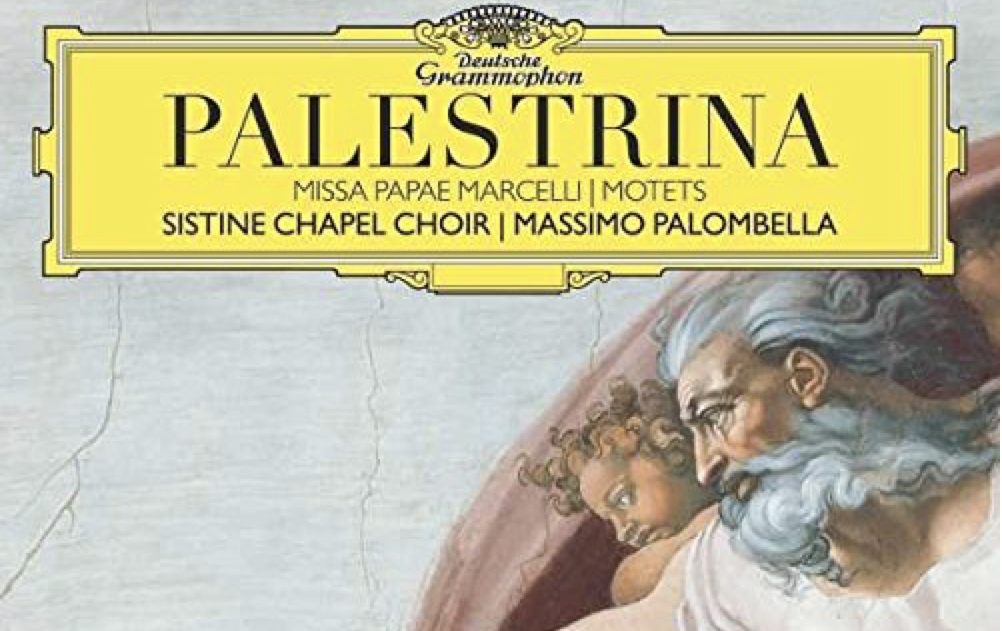“Palestrina. Missa Papæ Marcelli – Motets,” a CD of the Pontifical Sistine Chapel Choir released today, expresses something Pope Francis has called for repeatedly: That the Church be an «outbound» Church, seeking to bring the Good News to the world around us.
This reflection was offered by Archbishop Georg Gänswein, prefect of the Papal Household, in presenting the CD today in the Vatican press office.
The CD is a monographic work on Pierluigi de Palestrina edited by Deusche Grammophon. The panel presenting the work was composed of Archbishop Gänswein and Msgr. Massimo Palombella, director of the Pontifical Sistine Chapel Choir; Dickon Stainer, president and chief executive officer of Global Classics Universal Music Group International; Clemens Trautmann, president of Deustche Grammophon; and Mirko Gratton, director of the Classical Music Department of the Universal Group.
Archbishop Gänswein explained that it was not by chance that the second CD by the Pontifical Sistine Chapel Choir contained the famous Missa Papæ Marcelli and several motets on the theme of mercy, selected to emphasise also musically the extraordinary Jubilee convened by the Holy Father. “Last year, on the occasion of the presentation of the first CD of the Pontifical Sistine Chapel, the principal intention was to promote awareness of the centuries-long history of this ancient institution of the Holy See, its artistic, cultural and above all spiritual function, and its special bond with the Pope. .. Listening to this CD and reading the accompanying booklet, one is immediately aware not only of the spiritual reasons for such refined and sublime music, but also of the great commitment by the director and the singers of the choir in perceiving and rendering the original inspiration. With this Mass, the prince of Roman polyphony has successfully sought to respond to what the Council of Trent asked of liturgical music: that is, the intelligibility of the text united with the quality of the music.”
“This challenge remains pertinent today,” he continued, “and sees the Pontifical Sistine Chapel Choir engaged in positioning liturgical relevance the great musical heritage of the Church, intelligently acknowledging scientific studies on ancient music and experimenting new ways of implementing and proposing great music in the context of the liturgical reform of Vatican Council II. In this way, the aims of this CD, which is presented as a cultural operation, go far beyond in their endeavour to contribute to communicating the essence of the Catholic Church’s mission, which is to evangelise, that is, to announce the good news also through beauty, the way to God, and to invite the search for good, the querere Deum which is inherent in art and in religious music. This is intended to express that outbound Church of which Pope Francis speaks, a Church that is not afraid to speak the language of man and his needs, of which music is a high and universal expression.»
The maestro and director of the Pontifical Sistine Chapel, Msgr. Massimo Palombella, highlighted that the “almost mythological” Missa Papæ Marcelli is Palestrina’s first work for six voices and the only composition explicitly dedicated to a pope. Furthermore, it is attributed “the merit of having saved polyphony, ensuring that ‘intelligibility of the text’ requested of polyphonic music by the Council of Trent.
“The possibility, more unique than rare, of recording in the Sistine Chapel, is an added value in the search for aesthetic pertinence,” he remarked. “Indeed, by taking this approach, the Pontifical Sistine Chapel Choir has for some time now been revisiting a certain way of singing intended to produce strong and powerful ‘basilica sounds’. This happened for the simple fact that in the time of Palestrina, the Pope’s celebrations did not take place in St. Peter’s Basilica, but rather in the Sistine Chapel, and also because the current St. Peter’s Basilica did not exist, as it was in construction. Singing in the Sistine Chapel necessarily demanded the search for a more intimately perceived sonority. The great emotionality of a mass of sound, of singing voices filling the vaults of a basilica with sound, is replaced by the refined perception of the text, from the emotional and expressive rendering of the word through sound, from the dialectical relations that emerge from the contrapuntal language understood as an intellectual component moved by the emotions.»
—
To buy CD at Amazon: https://smile.amazon.com/Palestrina-Missa-Papae-Marcellii-Motets/dp/B01I4CK5ZU/ref=sr_1_fkmr0_1?ie=UTF8&qid=1475854224&sr=8-1-fkmr0&keywords=Sistine+Chapel%2C+Palestrina.+Missa+Papæ+Marcelli+–+Motets

Sistine Chapel Choir Releases Another CD
«Basilica sounds» of CD hearken back to Masses celebrated in the Sistine Chapel in the times of Palestrina


